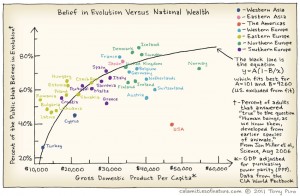08:55 – Following the crisis summit, there’s lots of joy in the EU. The feeling among people who don’t understand much about economics is that Greece is saved, the Euro is saved, they’re all saved. Economists and market analysts know better. What the crisis summit accomplished was necessary, but by no means sufficient. All that it really accomplished was to put off the reckoning for a short time, perhaps 90 days or less.
In one very ominous sign, Bulgaria announced that it was putting its plans to join the Eurozone on hold indefinitely. In effect, Bulgaria said that it believes its own currency is stronger than the Euro. And it may well be right. This vote of no-confidence in the Euro will not go unnoticed by investors.
And, of course, Fitch has already declared Greek debt to be in default, with Moody’s and S&P no doubt soon to follow. We’re assured by the Euro authorities that this default is “partial” and “temporary” and “selective”, but as far as investors are concerned, default is default. Nor are investors stupid. They did notice that the crisis meeting left the EU bailout fund at its current level, when it actually needed to be at least tripled in size to have any hope of propping up Spain and Italy as their debt comes due. Investors also noticed that the crisis meeting did nothing to address the critical liquidity problem among European banks. In fact, it worsened it by demanding that the banks “voluntarily” take a hit to their balance sheets on Greek debt, albeit concealing the damage by allowing the banks to continue carrying essentially worthless Greek debt instruments at face value rather than market value.
As hundreds of billions of Spanish and Italian debt matures over the next few months, it’s going to become abundantly clear that the crisis summit accomplished nothing but delaying the problem for a few weeks. Even Keynesian economist Paul Krugman gets it.
Nor is it certain that Merkel and the other leaders of the wealthier northern European countries can deliver what they promised at the summit conference. They have their own legislatures and voters to worry about. German voters almost universally perceive past and future bailouts as simple transfers of money from their own pockets to profligate southern countries, and they’ve had about enough. In Holland, this whole fiasco has accomplished something previously thought impossible: Dutch political parties, from far left to far right and everything in between, are united in their opposition to these huge transfers of their money to southern countries.
So Merkel, Sarkozy, and other leaders are walking a very fine line. Supporting what was needed to actually solve the problem would end up with them and their parties being routed at the polls. That solution, beginning with Eurobonds and ending with full fiscal and political union, is simply unacceptable to voters in Germany, Austria, Holland, and Finland. And rightly so, because the inevitable result would be a united Europe as the world’s newest third-world country.
Anyone who works with plasticware in a lab should keep the chemical resistance of various types of plastics in mind. If it weren’t for the high cost, the various Teflon plastics would be ideal. They’re resistant to almost anything, and anything they’re not resistant to is something I probably don’t want to be using anyway. Polypropylene (PP) and the polyethylenes (LDPE and HDPE) are, with some exceptions, pretty resistant to most chemicals. Polyethylene terephthalate, PET, is most familiar as softdrink bottles. It’s transparent, while PP, LDPE, and HDPE are translucent or opaque, depending on thickness and type. PET is also resistant to most dilute chemicals as well as alcohol and some other organic solvents. What it’s not resistant to, among other things, is concentrated strong acids.
So, yesterday I was down in the lab, making up 2 liters each of various chemical solutions. I was using 2-liter PET Coke bottles as mixing vessels. Among the solutions I was making up was 0.1 M iron(II) sulfate. Like most iron(II) salts, iron(II) sulfate has a nasty habit of spontaneously oxidizing to the iron(III) salt, with the spare iron ions reacting to form insoluble iron hydroxide and iron oxides. The result is a cloudy mess. The way to avoid that is to have sulfate ions present in excess, which is most easily done by adding a small amount of concentrated sulfuric acid to the iron(II) sulfate solution. So there I was, with about 1.5 L of distilled water in a clean 2-liter Coke bottle. I started to add 8 mL of 98% sulfuric acid, and realized as I started to pour what was going to happen.
Yep, as I trickled the concentrated sulfuric acid into the bottle, it ran down the inside of the bottle and instantly started depolymerizing the PET. My pretty transparent bottle turned cloudy white as the PET went from the transparent amorphous form to the opaque semi-crystalline form. I quickly dumped the contents of the bottle down the drain before the PET depolymerized completely. I don’t often have do-overs when I’m making up solutions, but this was one of them.
09:27 – Here’s a pretty amazing video of a group of people in a small boat, at considerable risk to themselves, saving a young humpback whale that had become entangled in a gill net. Even a juvenile humpback could have capsized their boat or turned it into kindling. But the humpback seemed to realize that these humans were trying to help it, and it docilely allowed them to do so. At about 6:30 in, the whale is free. She puts on an incredible display of joy, or perhaps thanks to her saviors. (H/T to Jerry Coyne)

